
College students outnumber other residents in these towns
This story originally appeared on Best Universities and was produced and distributed in partnership with Stacker Studio.
College students outnumber other residents in these towns
Colleges and universities are often vital to the economic health of towns, in many places, entire counties.
Small cities such as Amherst, Massachusetts, rely heavily on outsized student populations to power local economies and daily dynamics. Across the country in the Golden State, the University of California at Irvine functions as Orange County's second-largest employer, infusing $7 billion each year into the local economy.
Perhaps even more than the financial impact, a higher education institution can bring dynamism and growth to a city or town, often taking center stage in the area's cultural landscape.
One of the most common ways this happens is through organized sports. Athletic programs breed new talents and engage the community in the vibrancy of competitive sports; many college programs receive national attention akin to professional leagues. Institutions often reinvest the revenue generated from athletic events into academic programs and infrastructure, which, in turn, strengthens that school's ability to draw in new talent.
Colleges and universities can shape a city's public services to the extent they become essential to the community's well-being and development. Through its health care system in Georgia, Emory University provides thousands of Atlanta residents with medical aid and emergency services at 11 hospitals and over 250 provider locations, with a staff of nearly 3,000 physicians across 70 specialties.
Best Universities identified 11 places with more degree-seeking undergraduate students than the residential population, citing data from The Integrated Postsecondary Education Data System and 2021 5-year population estimates from the Census Bureau.
This is not a comprehensive list of towns or cities where students outnumber residents, as there are many more around the country. Students who are enrolled exclusively in distance learning are not included. Where there are multiple schools in town, the largest university is listed.
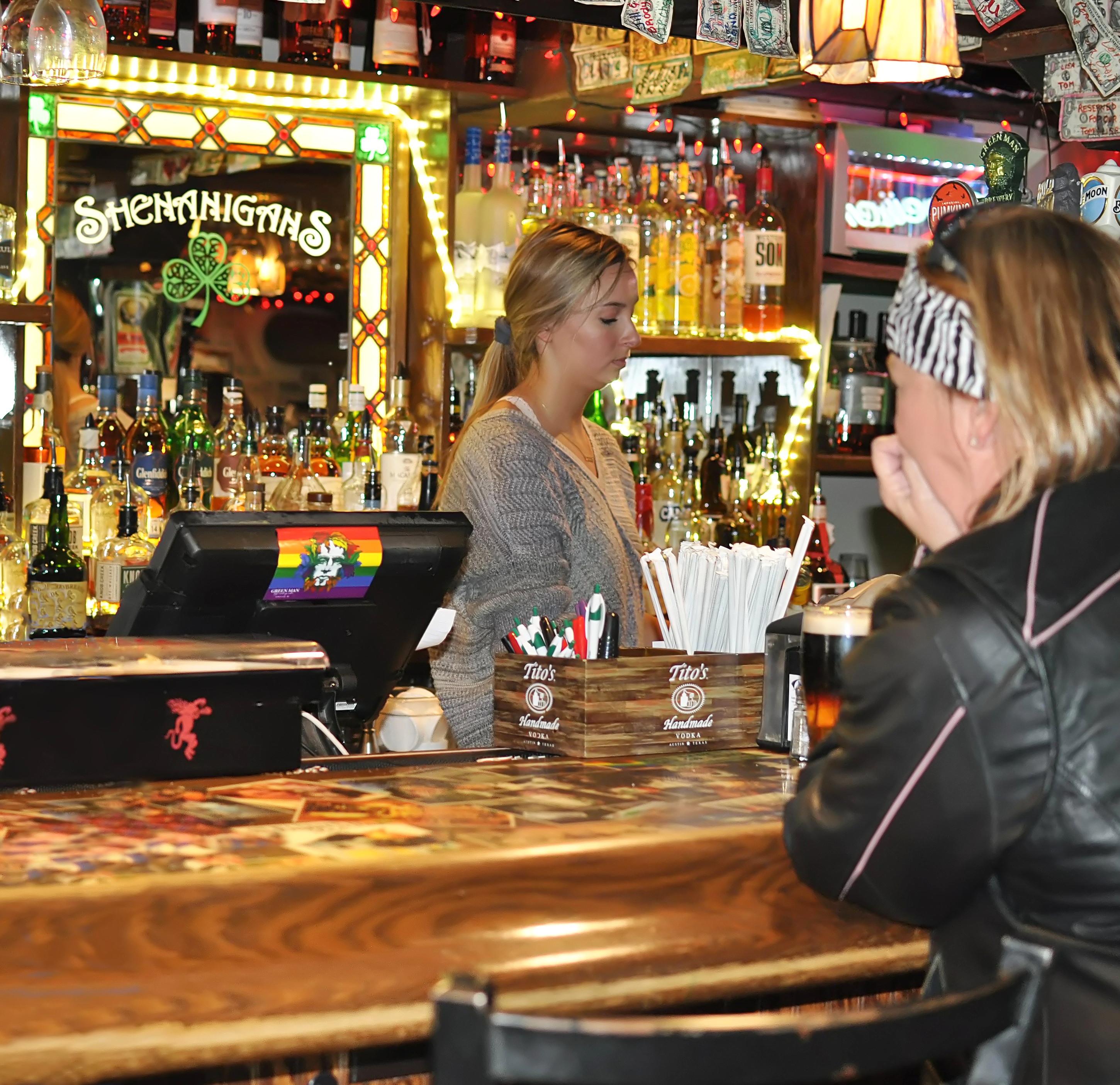
Dahlonega, Georgia
- Residential population: 6,471
- Student population: 16,614 (10,143 people greater)
- School: University of North Georgia (16,614 students)
Once the first gold rush site in the U.S., Dahlonega is now the heart of northern Georgia's wine production and tasting. A handful of wineries and several vineyards attract wine enthusiasts from all over the country. The University of North Georgia, founded in 1873 on the ashes of the U.S. Branch Mint at Dahlonega, is the state's seventh-largest public university with five campuses and over 100 programs.

Union, New Jersey
- Residential population: 2,848
- Student population: 11,706 (8,858 people greater)
- School: Kean University (11,706 students)
Back in 1667, Union was one of the nation's first settlements of English immigrants. Over a century later, it was the site of the Battle of Connecticut Farms, a conflict won by the Continental Army during the Revolutionary War. The town's residents are mostly students of Kean University. This public post-secondary institution boasts of being a "top producer of teachers in New Jersey" and "a growing educational hub in the fields of business, health care, and technology."
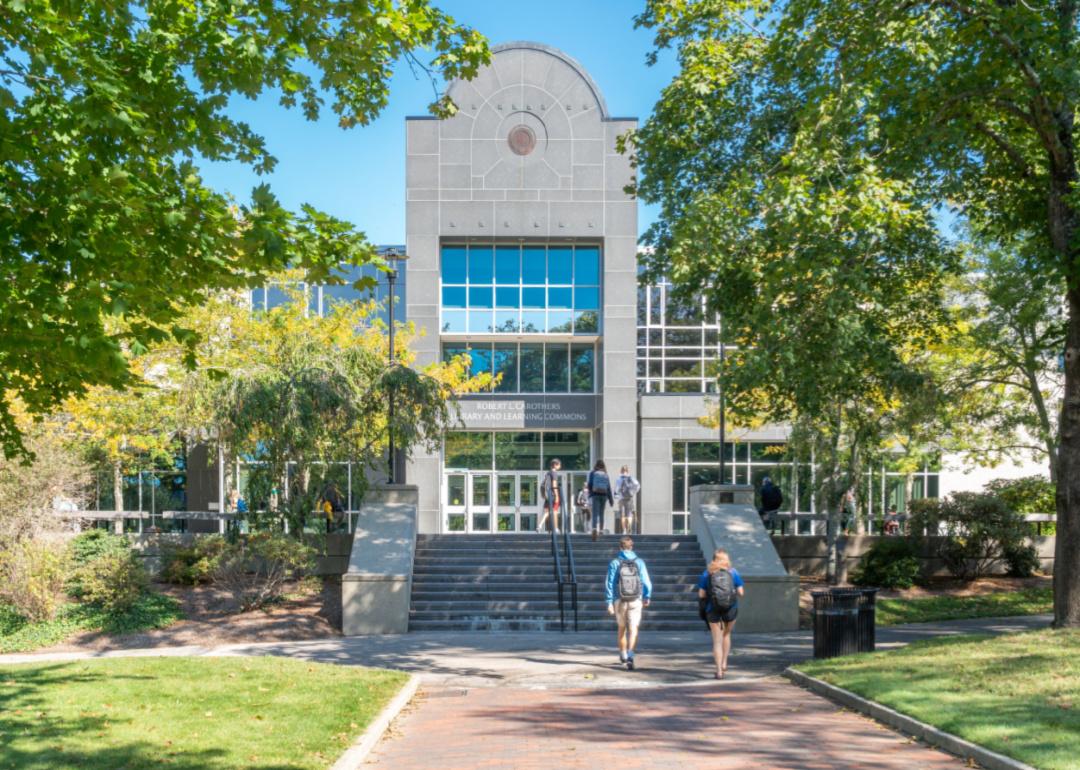
Kingston, Rhode Island
- Residential population: 6,496
- Student population: 13,635 (7,139 people greater)
- School: University of Rhode Island (13,635 students)
Thirty-eight buildings from the 18th and 19th centuries that make up most of Kingston's center appear on the National Register of Historic Places list. The district is located just outside the main campus of the University of Rhode Island, the alma mater of over half of the village's population. The college's nursing school repeatedly ranks in the top 50 schools in the country, while the postdoctoral College of Pharmacy is one of the nation's top 10 in its category.

Clemson, South Carolina
- Residential population: 17,238
- Student population: 21,181 (3,943 people greater)
- School: Clemson University (21,181 students)
European immigrants settled on the banks of the Keowee River—originally Cherokee land—in the early 19th century. The settlement was named Calhoun, but it later changed to honor the indivisible relationship that links it to Clemson University, the town's cultural center and economic backbone.
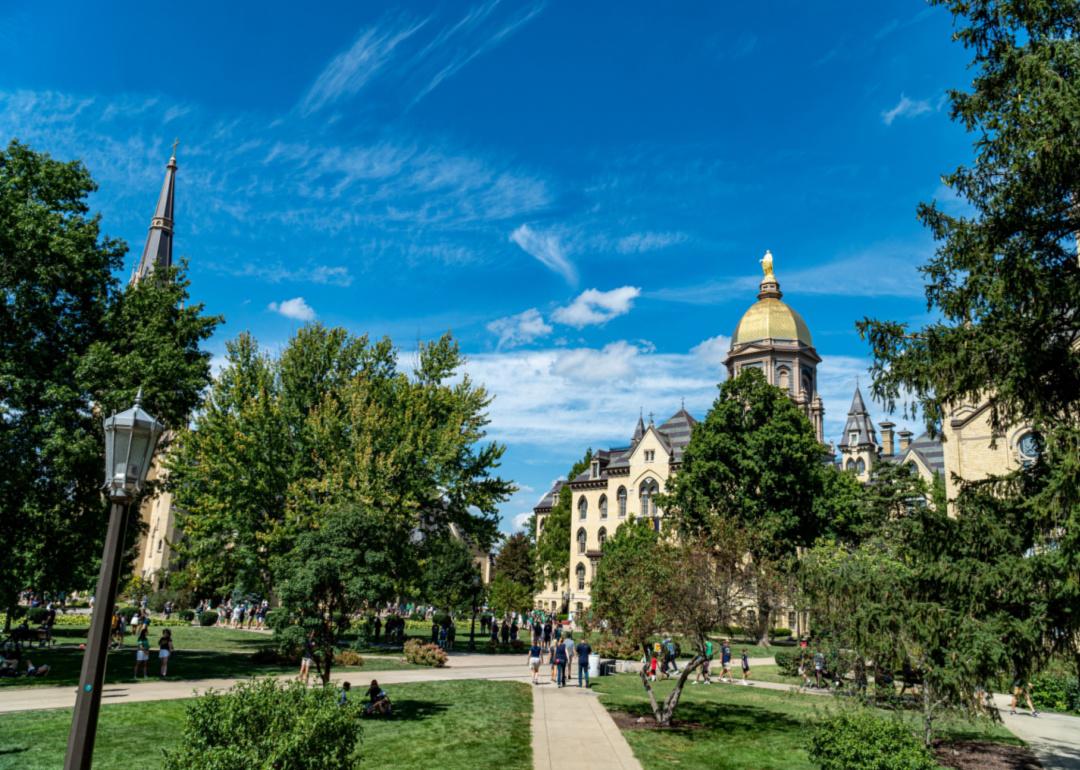
Notre Dame, Indiana
- Residential population: 6,581
- Student population: 10,850 (4,269 people greater)
- Largest school: University of Notre Dame (8,976 students)
The unincorporated area of Notre Dame and the city next to it, South Bend, grew exponentially around the turn of the century thanks to a flourishing manufacturing industry. The industrial hype quieted down while the prominent institution of higher education that bears its name, and the picturesque campus where it lays became the town's main attraction for students and tourists alike.
The University of Notre Dame campus is an open site where visitors and prospective students explore the school's historic buildings, art museums, and churches. College sports events are electrifying and a popular activity among residents.

Highland Heights, Kentucky
- Residential population: 6,896
- Student population: 7,577 (681 people greater)
- School: Northern Kentucky University (7,577 students)
The suburban town of Highland Heights is just 7 miles south of Cincinnati, a major city in the neighboring state of Ohio. Residents of the area enjoy the perks of a modern metropolis along with the charm of a small and cozy Bluegrass State town.
Northern Kentucky University moved to Highland Heights in 1971 and since then has evolved into a leading aspect of the town's development and dynamics. The 1990s were particularly significant for NKU as it became "a perennial member of the President's Higher Education Community Service Honor Roll."

Pendleton, South Carolina
- Residential population: 3,447
- Student population: 4,790 (1,343 people greater)
- School: Tri-County Technical College (4,790 students)
Pendleton is as old as it is charming and safe. The entire 3.8-square-mile town is a registered historical site. Most nonstudent residents own their homes, and the quality of life is considered optimal. The town is home to Tri-County Technical College, a community school offering degrees in 70 majors.
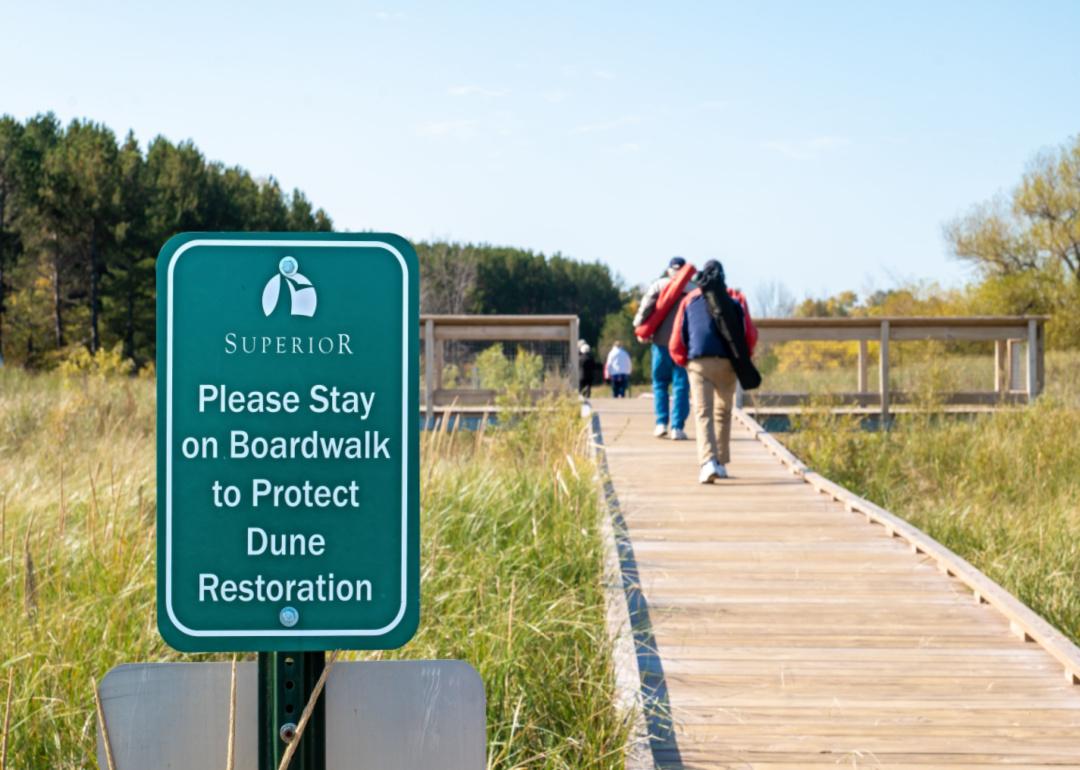
Superior, Wisconsin
- Residential population: 696
- Student population: 1,624 (928 people greater)
- School: University of Wisconsin-Superior (1,624 students)
The town takes its name from Lake Superior, one of the Great Lakes, which hugs its northwestern end. Framed by two rivers, aquatic and snow sports are popular in summer and winter. Superior and its adjacent recreational areas offer jaw-dropping scenery and an array of outdoor activities. The largest post-secondary institution in the area is the University of Wisconsin-Superior, a four-year college with more than 60 programs.
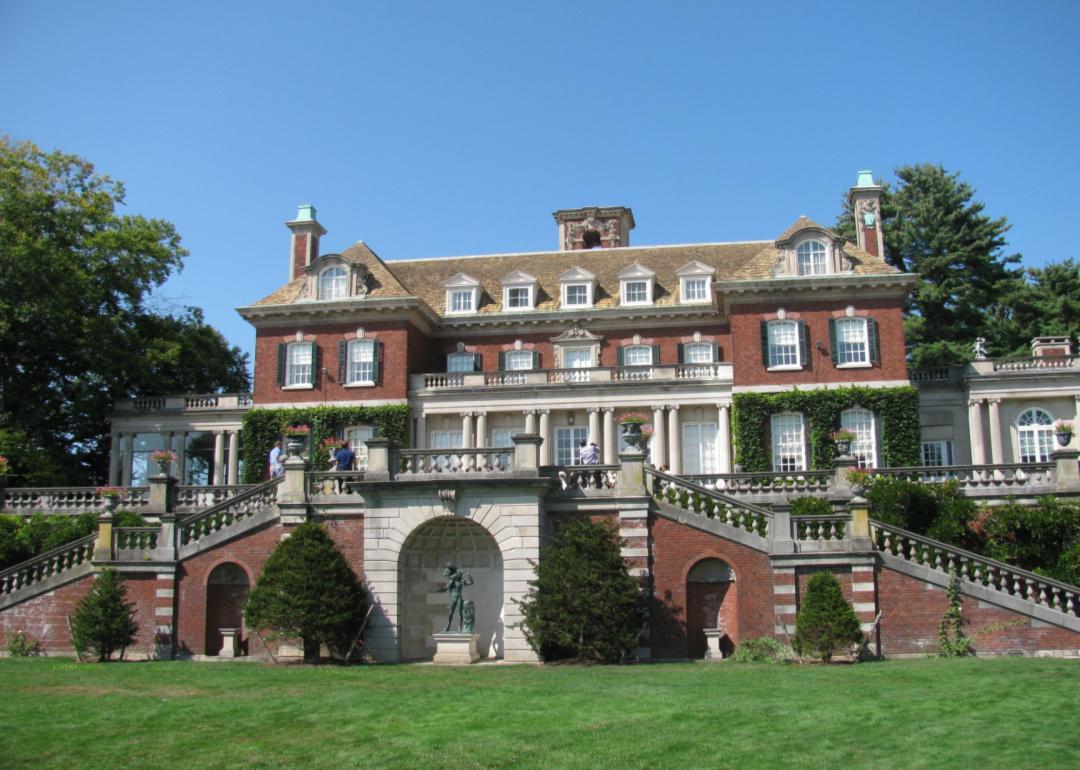
Old Westbury, New York
- Residential population: 4,567
- Student population: 8,224 (3,657 people greater)
- Largest school: SUNY College at Old Westbury (4,688 students)
SUNY College at Old Westbury is located in one of the wealthiest zip codes in the nation. The incorporated village was originally a rural area inhabited by Quaker communities until the railroad arrived. Eventually, New York City's high society noted the potential of the land for several exclusive activities, such as hunting and playing polo.
One of the village's main attractions is Old Westbury Gardens, an English-style mansion and surrounding lands that once belonged to the descendants of a prominent businessman and philanthropist, Henry Phipps Jr.
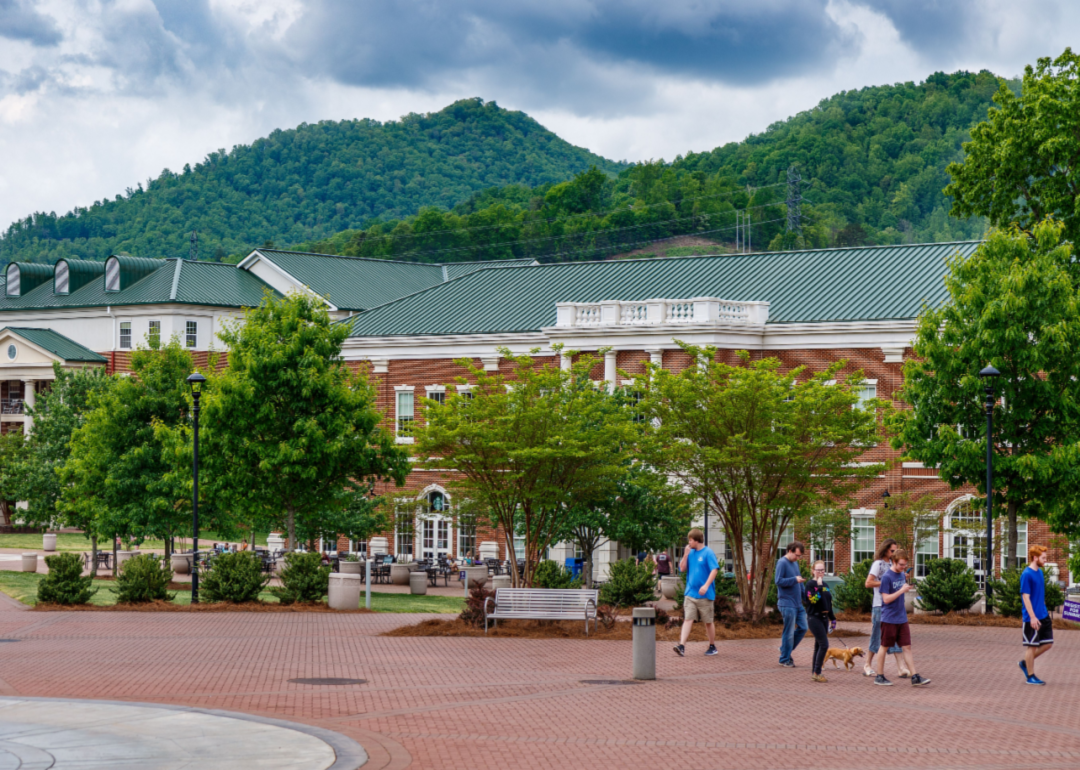
Cullowhee, North Carolina
- Residential population: 6,538
- Student population: 8,771 (2,233 people greater)
- School: Western Carolina University (8,771 students)
The Great Smoky Mountains are the incomparable backdrop that embellishes Cullowhee, known as the Valley of the Lilies. The area is home to West Carolina University, which offers more than 115 undergraduate majors and over 40 graduate programs. The college focuses on high-demand careers in engineering, health care, education, and business, among others.

Fayette, Iowa
- Residential population: 1,139
- Student population: 3,198 (2,059 people greater)
- School: Upper Iowa University (3,198 students)
Frog Hollow Lake is one of the main attractions of the 5,700-acre Volga River State Recreation Area, where fishing, canoeing, hiking, skiing, boating, and camping are just a few of the outdoor activities Fayette residents enjoy. Most of these residents are students at Upper Iowa University, a private, nonprofit university that recently announced it was dropping its tuition fees by 30%.



